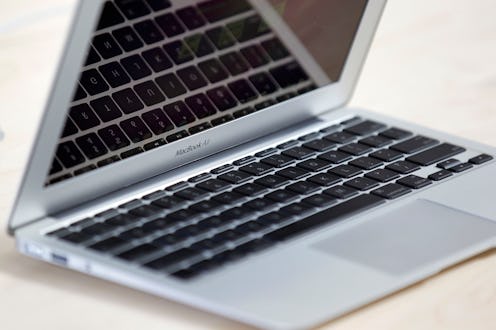News
Will You Need A New Charger For Your MacBook?
As Apple releases waves of new products, the improved software and beautiful hardware tends to come with a cost: not just the high price tag, but the difficulty of finding and buying a new charger to accommodate your shiny new product. As for me, I'm still adjusting to the move to "lightning" chargers for iPhones, and I know my local library only recently acquired loaner charging cords for MacBook Airs. But there's a new MacBook Air in town — haven't you heard? Tim Cook's Monday announcement of a brand-new, lighter-than-ever MacBook Air made us wonder: will we need to buy a new MacBook charger for this thing?
The new MacBook weighs only two pounds and is just over 13 millimeters tall. Basically, it's tiny. And since it's even thinner than the previous MacBook Air, which has fewer ports than a regular MacBook Pro, there's even less room on the side of your keyboard to plug in USB cords, AUX output, headphones, memory cards, or discs. In fact, the new MacBook has only one port on its entire body — a futuristic USB-C port on the left side — and a plug for your headphones on the opposite side. According to Cook, the port can be used to charge your computer, plug in external displays, and transfer data.
This port isn't totally new — it's the same kind of USB port on your iPhone — but its launch on the new MacBook will require a slew of new adapted technology that will be able to fit this special port. As for the MacBook itself, you will need a new charger. Your current Mac charger no doubt has magnetic technology, called MagSafe, that the company has been using for years. The new MacBook will be the first Apple computer to ditch the magnetic charger since it was introduced in 2006.
The MagSafe technology locks your charger into its port and basically keeps your laptop from flying across the room and breaking when you inevitably trip over the charging cord. Without MagSafe, we could be looking at a traumatic episode of computer lives lost over a simple tripped charger.
The new MacBook USB-C charger also has lower wattage — it's rated 29W, while the traditional MagSafe 2 charger is rated 45W, which could have an impact on how your computer charges.
The positives of the USB-C: it transfers data very quickly — five gigabits per second — it's versatile, and it works bidirectionally. You know how when you go to plug in a USB cord to your computer, you always try to do it with the wrong side up before you remember that it's upside-down? With the USB-C port, you can't be wrong. It's the same type of port your iPhone has, which, as we already know, has no "right" or "wrong" side.
As for the bidirectionality — which is of questionable word status — that means you can plug your MacBook into the wall via the USB-C port and charge it, or you can plug your iPhone into the MacBook and charge your phone that way. This will require you to have a cord with double-USB-C sides to fit both your phone and your computer, and you will no longer be able to charge both your MacBook and your iPhone at the same time.
There is a hack: for $79, you can purchase a USB-C multi adapter, which will allow you to plug in all your normal stuff.
To the USB-C — and beyond!
